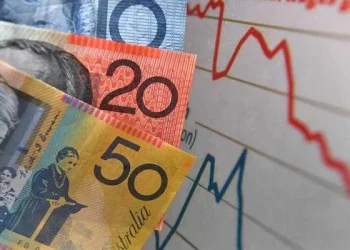In the financial epicenter of the United States, the decisions and statements of the Federal Reserve carry immense weight, influencing not only the domestic economic landscape but reverberating across global markets. On Wednesday, May 7, 2025, as Jerome Powell, the chairman of the US Federal Reserve, took the stage after the Federal Open Market Committee (FOMC) meeting, his words became the focal point for economists, investors, and financial enthusiasts alike.
The Fed had opted to keep interest rates steady for the third consecutive meeting, maintaining them in the range of 4.2% – 4.5%. However, it was Powell’s subsequent press conference that truly sent ripples through the financial world. Throughout his remarks, Powell leaned heavily on the terms “wait” and “uncertain,” uttering them approximately 20 to 25 times. This frequent repetition was no mere coincidence; it was a clear indication of the Fed’s cautious approach, one firmly rooted in a data – driven strategy as it grapples with mounting global economic pressures.
The ‘Wait – and – See’ Mentality
Powell emphasized, “We are well – positioned to wait for greater clarity before considering any adjustments to our policy stance.” This statement encapsulates the Fed’s current modus operandi. The “wait – and – see” approach is a reflection of the central bank‘s concerns regarding a plethora of unresolved economic issues. The ongoing trade tariffs, especially those between the US and China, continue to cast a shadow over the economic outlook. Their impact on various sectors, from manufacturing to agriculture, remains uncertain, and the Fed is hesitant to make hasty decisions without a clearer understanding of how these trade frictions will play out.
Inflation trends also contribute to the Fed’s cautiousness. While inflation has shown some signs of volatility in recent months, it is unclear whether these fluctuations are temporary or part of a more long – term, concerning trend. Additionally, the resilience of the labor market, although seemingly strong on the surface, has underlying nuances. Unemployment rates may be low, but there are questions about wage growth, underemployment, and the sustainability of current employment levels in the face of potential economic headwinds. Since the last rate cut in December 2024, the Fed has chosen to bide its time, carefully observing how these economic variables evolve before making any further policy moves.
Navigating Uncertainty
The Fed chair was not shy about highlighting the challenges of making sound economic decisions in such an uncertain environment. “There’s so much uncertainty,” Powell stated, and nowhere is this more evident than in the context of the US – China tariff talks. These negotiations, which have been ongoing for some time, still lack a clear resolution. The potential for tariffs to simultaneously stoke inflation and slow down economic growth is a real concern for the Fed. If inflation rises due to increased costs of imported goods as a result of tariffs, while at the same time, businesses cut back on investments and hiring due to economic slowdown, the US could find itself in a precarious situation known as stagflation. Stagflation, characterized by a combination of high inflation, stagnant economic growth, and high unemployment, is a nightmare scenario for central banks, as the traditional tools of monetary policy become less effective in such a complex economic environment.
Rationale Behind the Fed’s Pause
Vijay Valecha, the Chief Investment Officer at Century Financial, provided further insights into the Fed’s decision – making process. He pointed out that the US economy, despite the uncertainties, still has a solid foundation, as evidenced by the consistent strength in hard economic data. This strength gives the Fed the leeway to wait and closely monitor incoming economic data points before charting its next course of action. Another significant factor influencing the Fed’s decision is the potential inflationary impact of President Trump’s tariffs. Powell’s repeated use of the word “uncertainty” in relation to the scope and magnitude of these tariffs is telling. If price pressures persist at a considerable level, there is a risk that inflation could become deeply entrenched. This, in turn, heightens the likelihood of stagflation, making the Fed’s future path even more convoluted.
Implications for the UAE
The implications of the Fed’s actions extend beyond the US borders. In the United Arab Emirates (UAE), where the dirham is pegged to the US dollar, the UAE Central Bank’s decision to mirror the Fed’s rate hold has direct consequences. Borrowers in the UAE may not experience immediate relief, as interest rates remain steady. However, the UAE’s robust non – oil sector performance serves as a buffer against potential economic shocks. As Valecha noted, “The UAE is well – positioned to function as a safe haven in the prevailing macroeconomic climate.” This resilience is due in part to the UAE’s diversification efforts over the years, which have reduced its reliance on the oil sector and made it more adaptable to global economic fluctuations.
As the global economic landscape continues to shift and evolve, all eyes will remain on the US Federal Reserve. Powell’s words and the Fed’s future actions will be dissected and analyzed, as they hold the key to understanding the trajectory of the US economy and its far – reaching impact on the rest of the world.
Related topics



















